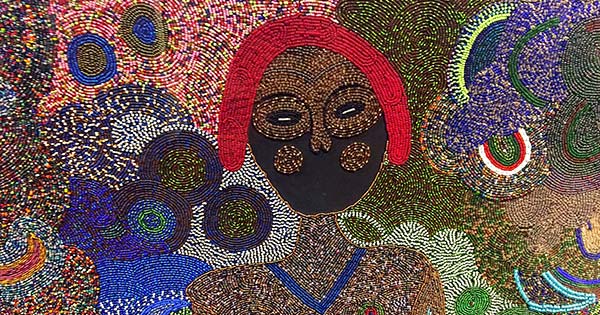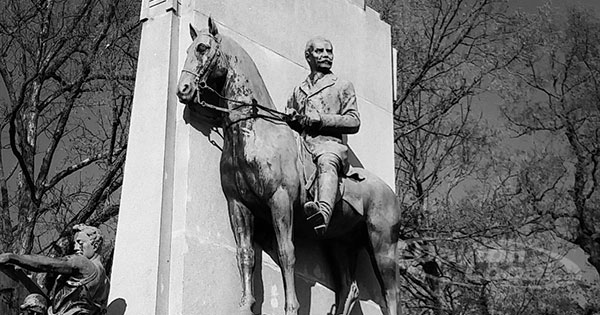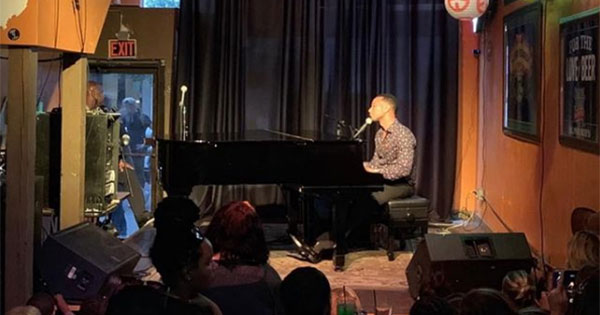Ubuhle Women: Beadwork and the Art of Independence Simply Astonishes

The Dayton Art Institute is the first stop for this new traveling exhibition highlighting the dazzling beadwork of South African Xhosa and Zulu artists.
Ubuhle Women: Beadwork and the Art of Independence Simply Astonishes
 I admit I wasn’t sure what to expect when I heard about an exhibit entirely devoted to beadwork. I thought back to the arts and crafts of my youth - the colorful plastic beads woven into friendship bracelets and macrame purses - and could not conceptualize this form of art carried out on a grand scale. But what awaited me in the exquisitely colorful and symbolic art of Ubuhle Women: Beadwork and the Art of Independence simply astonished. Believe me when I say that photos of the canvases only hint at the intricacy and awe of these master works. They must be seen in person to fully experience their ubuhle, or beauty.
I admit I wasn’t sure what to expect when I heard about an exhibit entirely devoted to beadwork. I thought back to the arts and crafts of my youth - the colorful plastic beads woven into friendship bracelets and macrame purses - and could not conceptualize this form of art carried out on a grand scale. But what awaited me in the exquisitely colorful and symbolic art of Ubuhle Women: Beadwork and the Art of Independence simply astonished. Believe me when I say that photos of the canvases only hint at the intricacy and awe of these master works. They must be seen in person to fully experience their ubuhle, or beauty.
Ubuhle Women is a collection of works by a community of women from rural KwaZulu-Natal, South Africa. To create their art, the women attach glass beads to a black fabric called a ndwango. The materials used are typical of South African culture: beads to represent the society’s currency and adornment of women according to their station in societal life and the ndwango to represent traditional headdresses and clothing worn in the region.
 Ubuhle artist Ntombephi Ntobela describes the art as coming ‘directly from the soul” and after viewing these works, I wholeheartedly agree. Ntobela co-founded the Ubuhle community with Bev Gibson in 1999 as a way for women to gain financial independence through their work within the artisan guild. The resulting beadwork art is contemporary in style and covers social issues such as Apartheid, poverty, feminism, access to clean water and food, unemployment, and HIV/AIDS as well as universal themes of family, community, home, spirituality, memory, and hope.
Ubuhle artist Ntombephi Ntobela describes the art as coming ‘directly from the soul” and after viewing these works, I wholeheartedly agree. Ntobela co-founded the Ubuhle community with Bev Gibson in 1999 as a way for women to gain financial independence through their work within the artisan guild. The resulting beadwork art is contemporary in style and covers social issues such as Apartheid, poverty, feminism, access to clean water and food, unemployment, and HIV/AIDS as well as universal themes of family, community, home, spirituality, memory, and hope.
I was particularly moved by the works of Nolindelo Sidibi, who bravely continued her work in the face of an HIV-positive diagnosis to create more beadwork in the remainder of her brief life than any other artist within the community. Her Ndenzeni: What Have I Done is a beautiful tapestry of a red AIDS ribbon amidst a glittering patchwork of beads that serves as a poignant reminder of the impact of the disease worldwide. The Ubuhle community has lost five artists to HIV/AIDS and practices the art of beadwork as an act of remembrance and healing.
Another of my favorite works of the collection is Flowers for the Gods by Zulu artist Zondlile Zondo. The works is a vibrant mix of boldly colored beads arranged in a floral pattern with a chalice as a centerpiece. But what made me smile was the caption on this work, which says, “Even the gods when they are having a party need flowers on the table.”
 After viewing the exhibit on the museum’s lower level, visitors will want to go upstairs to the Renaissance Gallery (Gallery 220) to view the collection’s largest and most breathtaking work, The African Crucifixion. The work is 15 feet high and was created by seven Ubuhle artists, each dedicating one year to completion of the work. Originally commissioned for an Anglican cathedral, the work has become part of the traveling exhibit and defies description in its radiance when bathed in the natural light of the gallery.
After viewing the exhibit on the museum’s lower level, visitors will want to go upstairs to the Renaissance Gallery (Gallery 220) to view the collection’s largest and most breathtaking work, The African Crucifixion. The work is 15 feet high and was created by seven Ubuhle artists, each dedicating one year to completion of the work. Originally commissioned for an Anglican cathedral, the work has become part of the traveling exhibit and defies description in its radiance when bathed in the natural light of the gallery.
My only disappointment with the exhibit was that I wanted to learn more about the symbolism found within these canvases and was frustrated to learn that many of the artists’ stories were not recorded. That said, the lack of background information led me to realize that visitors must use their imaginations and unfold their own myths about the meanings of the colors and patterns depicted by the Ubuhle women. In this light, visitors will undoubtedly discover, as I have, their own unique messages and relevance from the beauty of the Ubuhle beadwork.
If you’re looking for a way to celebrate independence this summer, I can’t think of a better way than through the beadwork of the resilient and fiercely independent Ubuhle Women. This exhibit is a feast for the eyes and the spirit.
Ubuhle Women: Beadwork and the Art of Independence is on display now through September 10, 2017. Admission, which includes access to the exhibition and the museum's permanent collections, is $14 for adults, $11 for seniors 60 and over, $11 for active duty military personnel, $11 for students 18 years and older with ID, and $6 for youth ages 7 to 17. Admission is free for DAI members and children under 6. Museum hours are Wednesday through Saturday 11 am – 5 pm with extended evening hours on Thursdays until 8 pm and Sunday Noon – 5 pm. The museum is closed Mondays, Tuesdays, and major holidays.


















